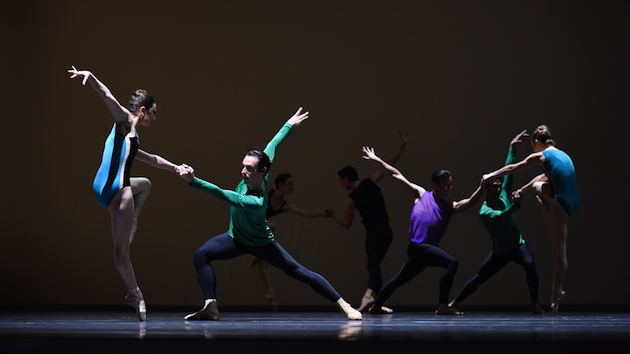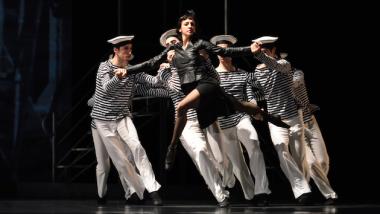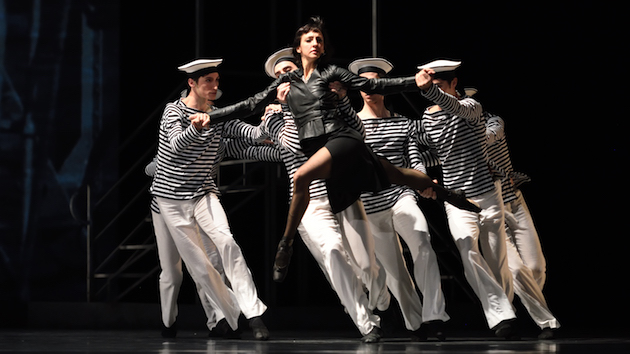
Optimistic Tragedy, resident choreographer Yuri Possokhov’s world premiere Thursday night at the San Francisco Ballet, has been lost at sea. This despite Possokhov’s valiant and often terrific-looking efforts to keep his dancers afloat.
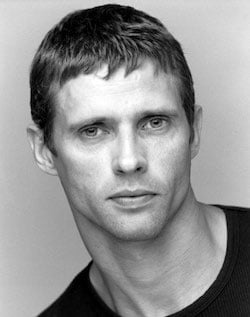
But let’s reverse the engines. The new piece was inspired in part by Sergei Eisenstein’s Battleship Potemkin, and in part by a 1933 play An Optimistic Tragedy (and perhaps by a blockbuster 1964 Soviet film of the same name). Possokhov, Russian born and Bolshoi raised, has come up with a vivid parable, set to the music of countryman Ilya Demutsky. It’s about the wages and losses of war, specifically the 1917 Russian Revolution, but also, it would seem, about what happens when sailors’ heads are turned by a great-looking commissar.
That would be the stunning Lorena Feijoo, with knives in her shoes like Rosa Kleb’s (don’t let the blades distract you, she’s got a gun) and a body like Ninotchka’s. She’s dressed in slinky black, like a gun moll, with a slit skirt and black toe shoes, and she vamps, well, like a vamp. Upon presenting her credentials to the Bolshevik ship’s captain (Luke Ingham), she is locked in his embrace, until an anarchist (Taras Domitro) tries to rape her. This is where she uses the gun. She’s all legs and slither, a compelling figure whenever she moves, which is always.
The sailors, 14 in all, are loyalists or anarchists, dressed in nautical permutations of black and white. They move in awe-inspiring Constructivist cohesion, locking arms and bending knees, turning, jumping, and lifting, or, in more limpid moments, sinuously evoking the waves of the sea that surrounds and will engulf them. But for all their stunning unity, their projection of yes, optimism, and the innovativeness (a Possokhov trademark) of their dances, it’s impossible to see where one faction ends and the other begins. They seem more for each other than ever against each other. Or is that the enigmatic message?
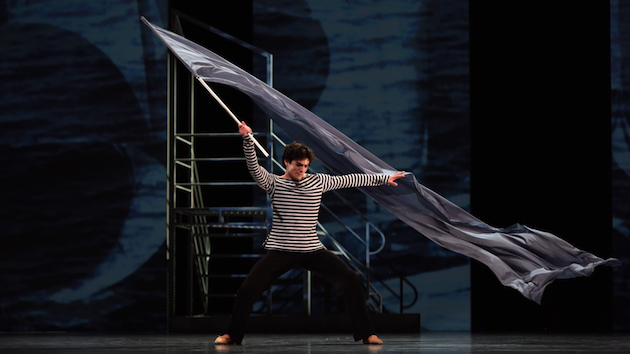
Amid this confusion, emotions are shown to the audience, rather than experienced. And sexily domineering as the Commissar is among all these seamen, her objectification takes away any aura of cunning that might throw on her credit or blame for the shipmates’ ideological conflicts, their descent into chaos, the loss at sea. (A touching preface, projected as the ballet begins, memorializes the sailors’ sacrifices.) Whatever the message, the lack of clarity, worse than a leaky hull, takes the ballet down, down, down.
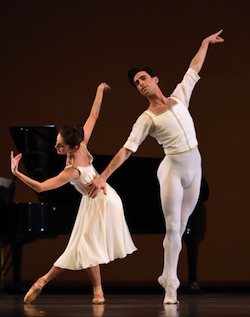
It was a bold idea to keep the décor black, white, and gray, and the tall, three-panel archival film projections of warships, sea, and sailors, designed by Alexander Nichols, wonderfully complemented the story. So too his flexible design for the ship’s bridge.
But when is everything too gray? Maybe when the Commissar unfurls her blank, gray, streaming banner. There’s nothing on it, nothing at all. Maybe nihilism, not Bolshevism and not anarchism, is the meaning, and the meaninglessness, of war.
Alexei Ratmansky’s piano ballet, the 2009 Seven Sonatas, set to Scarlatti, led off the evening. With Mungunchimeg Buriad at the grand piano, three marvelous couples made their virtuosity look like the easiest, most pleasant, most normal way to be in the world. Would – for us all -- that it were so.
The dancers were Lauren Strongin and Joseph Walsh, Frances Chung and Angelo Greco, and Sofiane Sylve and Carlo di Lanno.
William Forsythe’s Pas/Parts 2016, set to the music of Thom Willems, was the evening’s propulsive capper.
